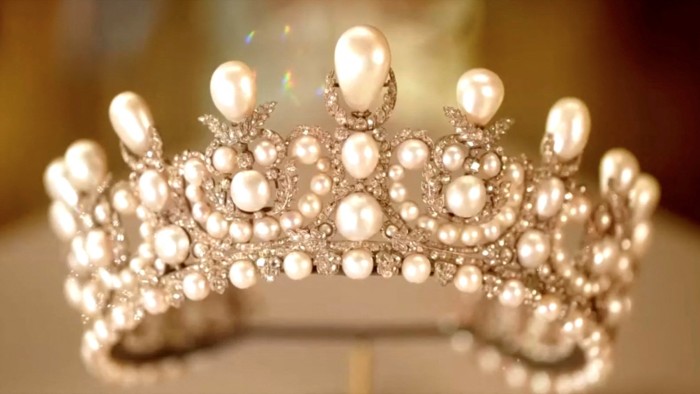Unlock the Editor’s Digest for free
Roula Khalaf, Editor of the FT, selects her favourite stories in this weekly newsletter.
France will not receive payouts for the loss of jewellery of “inestimable” historical value stolen from Paris’s Louvre museum, after the French government confirmed the objects were not covered by private insurance.
Thieves on Sunday broke into the Louvre using a furniture lift to access the first floor, cut into display cases and seized eight pieces including a diamond encrusted brooch that belonged to Napoleon III’s wife Empress Eugénie, as well as necklaces and diadems. The looters also tried to steal the Empress’s crown but dropped it as they made their escape.
The police are investigating the burglary in the hope of recovering the stolen jewellery but France’s culture ministry said the country would not be reimbursed for any losses linked to the objects that have an “inestimable heritage and historical value”.
“The state acts as its own insurer when national museums’ works are in their typical place of conservation,” a spokesperson said, in a statement first reported by Le Parisien newspaper, adding that this took into account the high cost of insurance “when the claims rate is low”.
On Tuesday evening, Paris prosecutor Laure Beccuau told RTL France the curator of the Louvre had valued the loss at €88mn.
“This sum is indeed extremely spectacular, but we must keep in mind that this loss is an economic loss that has nothing to compare with the historic loss that this theft has caused,” she said.
“We must also say that the wrongdoers who took this jewellery will not get €88mn if they had the very bad idea of taking the stones out of these pieces of jewellery or of melting them.”
While liability for works in the national collection generally sits with the state, museums do purchase insurance cover when moving objects or lending objects to one another.
The insurance value is “very often higher than the value of acquiring the work”, the ministry added.
Private galleries such as the Louis Vuitton Foundation and Pinault Collection, by contrast, would typically buy commercial insurance cover.
“For an institution like the Louvre, it’s almost impossible to insure your entire collection,” said Charlie Horrell, head of fine art at insurance broker Marsh.
Fine art coverage within London’s speciality insurance market, which covers much of the world’s most complex risk, totals about $4bn.
The Louvre’s collection alone would overwhelm the market, multiple insurance market figures said, with treasures ranging from Leonardo da Vinci’s “Mona Lisa” to the “Great Sphinx of Tanis” being almost impossible to value or appraise.
Similarly, the bulk of liability for Notre-Dame, the medieval cathedral that burned in 2019, sat with the French government, according to Grace Best-Devereux, a complex loss adjuster for claims management company Sedgwick, although some private contractors would take out commercial insurance cover when working on the monument.
However, private donations of about €840mn from 340,000 donors covered the cost of Notre-Dame’s renovation, preventing large costs from being borne by the taxpayer.
The heist at the Louvre is just the most recent in a string of museum thefts, with several involving gold. On Monday, French prosecutors said they had begun investigation proceedings against a Chinese woman on October 13 over the theft of 6kg of gold nuggets from the Natural History Museum of Paris last month.
The items came from gold discoveries in Bolivia, California, the Urals and Australia but the suspect was found with 1kg of melted down gold in Barcelona, after an international arrest warrant was issued.
Earlier this month, the National Museum of Wales in the UK reported that Bronze Age gold jewellery had disappeared in an apparent heist, and gold was stolen earlier this year from the Netherlands’ Drents museum.
Gold and silver prices have soared in recent months, with gold bullion up more than 50 per cent this year.
The high cost of metals may have helped incentivise the thefts, Best-Devereux said. Since gemstones would probably be re-cut before being sold on the black market, she added, the value of melted-down metals could potentially exceed that of precious gems cut from the stolen objects.
Best-Devereux expects insurers to demand more information in future from museums seeking to loan works to French collections, including about security measures in place and where in the museum the works would be displayed.
“There’s going to be more attention on loan agreements,” she said.

